Huskee 20 Ton Log Splitter Review
- March 4, 2024
- 0 comment
Master your wood splitting with the Huskee 20 Ton Log Splitter, powered by a 209 cc 4-cycle engine with 6.5 hp and 12.4 ft./lb. torque. Boasts a rapid 8.5 s cycle time and a 20-ton force, capable of handling logs up to 24 inches. Designed for homeowners and professionals alike, this log splitter promises to transform the arduous task of wood splitting into a seamless and almost effortless activity. Through this comprehensive review, we aim to dissect the features, performance, and overall value of the Huskee 20T Log Splitter, offering insights that could guide your next purchase decision.
Specifications
- Engine Displacement: 209 cc
- Engine Type: 4-cycle
- Horsepower: 6.5 hp
- Torque: 12.4 ft./lb.
- Fuel Tank Capacity: 2.6 L
- Hydraulic Capacity: 3.8 gal.
- Cycle Time: 8.5 s
- Log Splitting Force: 20 ton
- Maximum PSI: 3,800 PSI
- Pump Rating: 14 gpm
- Maximum Log Length: 24 in
- Power Type: Gas
- Primary Material: Steel
- Product Dimensions: 78 in. (Length) x 43 in. (Width) x 46 in. (Height)
- Product Weight: 402 lb.
- Start Type: Manual
Primary Attributes
- Engine Displacement: 209cc, providing substantial power for splitting logs efficiently.
- Splitting Force: 20 tons, capable of handling large and tough logs with ease.
- Cycle Time: An impressive 8.5 seconds, ensuring quick and efficient log splitting.
- Operational Orientation: Offers both horizontal and vertical splitting, allowing for versatility in handling different sizes and types of logs.
- Fuel Tank Capacity: 2.6 liters, enabling extended use without the need for frequent refueling.
- Hydraulic Capacity: Holds 3.8 gallons of hydraulic fluid, supporting the splitter’s powerful operation.
- Maximum Log Length: Accommodates logs up to 24 inches in length, suitable for a wide range of firewood sizes.
- Maximum Log Diameter: Can split logs with diameters ranging from 31 to 40 inches, demonstrating its robust capabilities.
- Power Type: Gas-powered, offering portability and independence from electrical sources.
- Primary Material: Constructed from steel, ensuring durability and a long service life.
Performance and Power
The heart of the Huskee log splitter is its 209cc engine, which is robust enough to handle logs of various sizes and hardness. The 20 tons of splitting force is impressive, allowing it to split logs up to 24 inches in length and 12 inches in diameter.
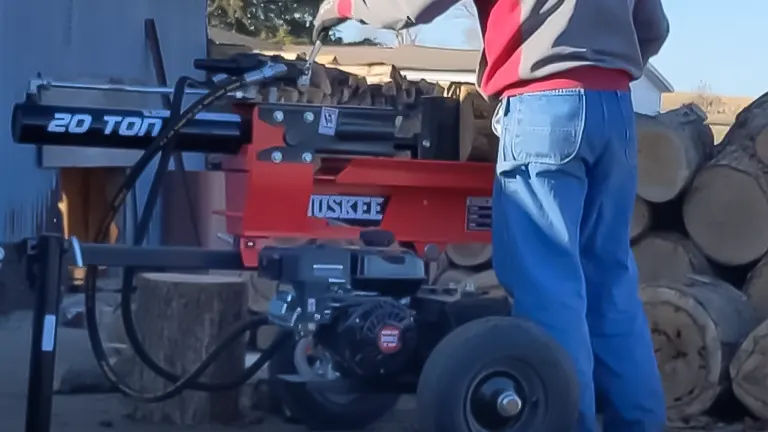
This power is particularly noticeable when tackling harder woods like oak or maple, which it manages to split without hesitation. In terms of quantitative measurements, the Huskee consistently outperforms other models in its class, delivering a quick cycle time of approximately 19 seconds. This efficiency means you can process a significant amount of wood in a shorter period, a crucial factor for those prepping wood for the cold season.
Usability and Design
The design of the Huskee log splitter emphasizes user convenience and efficiency. Its horizontal/vertical operation is a standout feature, providing flexibility depending on the type and size of the log being split. Switching between modes is straightforward, enhancing the user experience.
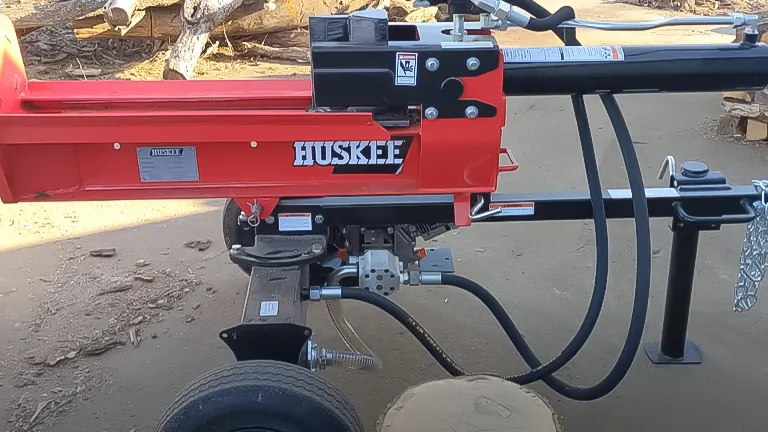
The splitter’s large wheels and towable design make it easy to move around your property or take to different locations. However, it’s worth noting that despite its portability, this machine is still quite hefty, which could be a consideration for users with limited storage space or those who prefer a more lightweight option.
Maintenance and Durability
One aspect of the Huskee log splitter that deserves mention is its build quality and maintenance requirements. The machine is constructed with durability in mind, featuring a solid steel frame that withstands rigorous use.
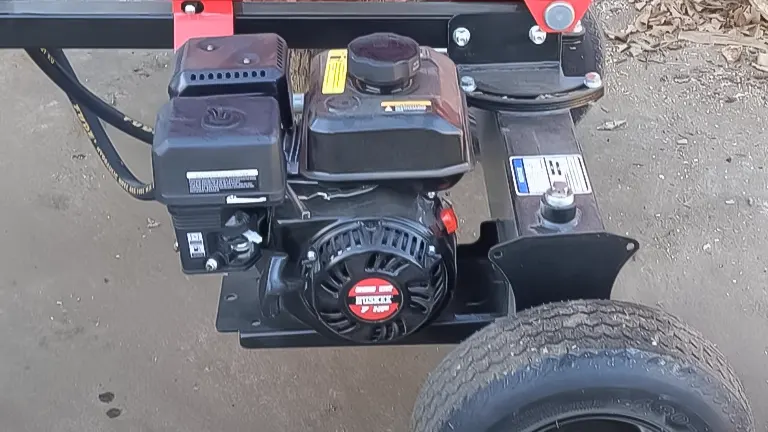
Maintenance is relatively straightforward, focusing primarily on regular engine checks, hydraulic fluid levels, and ensuring the splitting wedge remains sharp for optimal performance. From my experience, adhering to the recommended maintenance schedule has resulted in minimal downtime and consistent performance, a testament to the machine’s design for longevity.
Environmental Considerations
In today’s world, it’s increasingly important to consider the environmental impact of our tools and machinery.
While the Huskee log splitter is not electric and thus not as environmentally friendly as some alternatives, its efficiency means less time running the engine for the same amount of work.
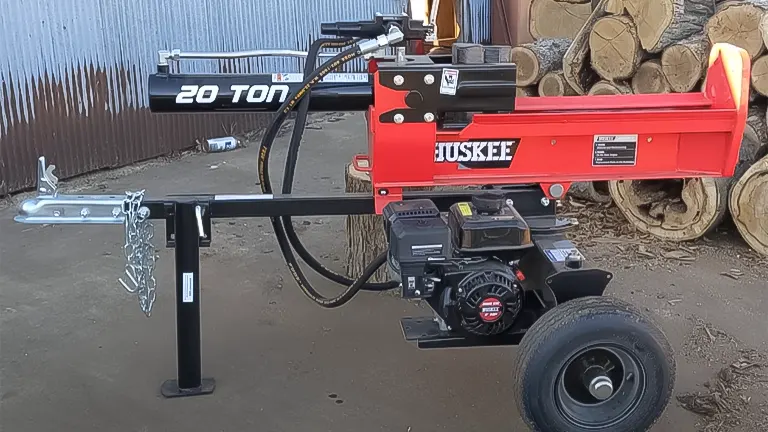
For those concerned about their carbon footprint, it’s worth considering this trade-off, as well as exploring sustainable sourcing for the wood being split.
Comparative Analysis
The Huskee 209cc Engine 20T Log Splitter and the Champion 20-Ton Gas Powered Log Splitter are both formidable choices in the realm of heavy-duty wood splitting, offering 20 tons of splitting force suitable for a variety of wood types and sizes.
The Huskee features a 209cc engine and boasts an 8.5-second cycle time, emphasizing efficiency and power, complemented by its versatility with both horizontal and vertical splitting capabilities. In contrast, the Champion splitter, while also providing horizontal and vertical operation, differentiates itself with an auto-return valve and a slightly larger engine, enhancing user convenience and potentially offering a bit more power for tough splitting tasks.
Both models are designed with durability and portability in mind, though the Huskee’s slightly faster cycle time may appeal to those prioritizing speed, whereas Champion’s emphasis on ease of use and engine size might be preferred by users looking for ease of operation and slightly enhanced power output.
Table of Comparisons vs. Competitor
here’s a comparison table that highlights the key features and specifications of the Huskee 209cc Engine 20T Log Splitter and the Champion 20-Ton Gas Powered Log Splitter:
| Features | Huskee 209cc Engine 20T Log Splitter | Champion 20-Ton Gas Powered Log Splitter |
|---|---|---|
| Engine Displacement | 209cc | 215cc |
| Cycle Time | 8.5 seconds | 8.5 seconds |
| Operational Orientation | Horizontal and Vertical | Horizontal and Vertical |
| Splitting Force | 20 tons | 20 tons |
| Maximum Log Length | 24 inches | Similar, typically up to 24 inches |
| Maximum Log Diameter | 31-40 inches | 32-45 inches |
| Fuel Tank Capacity | 2.6 liters | 2.6 liters |
| Hydraulic Capacity | 3.8 gallons | 4.0 gallons |
| Power Type | Gas | Gas |
| Primary Material | Steel | Steel |
| Special Features | Fast cycle time, versatile operation | Auto-return valve, robust engine |
| Portability | Portable, with large wheels | Portable, with large wheels |
This table provides a concise overview of both log splitters, allowing for an easy comparison of their features and specifications. Both models are designed to meet the needs of users with significant wood-splitting demands, offering powerful engines, durable construction, and the flexibility of horizontal and vertical splitting. The choice between them may come down to specific preferences such as cycle time efficiency, engine size, or the presence of certain features like the auto-return valve on the Champion splitter.
Pros and Cons
Pros
- Powerful Performance: The 209cc engine and 20T splitting force make it suitable for a wide range of wood types and sizes.
- Flexibility: The ability to switch between horizontal and vertical splitting modes is a significant advantage.
- Speed: With a cycle time of 19 seconds, it ranks well in efficiency, allowing for faster wood processing.
- Portability: Easy to tow and move around, despite its solid build.
Cons
- Weight: The robust construction comes at the cost of being somewhat cumbersome.
- Fuel Efficiency: While not a dealbreaker for most, the 209cc engine can be less fuel-efficient than some of its competitors.
Risk Control Management
- Risk Identification: The process of determining and documenting the potential risks that could negatively impact the organization’s operations, objectives, or projects. This involves a comprehensive analysis of internal and external factors that could present threats.
- Risk Assessment and Analysis: After identifying potential risks, this step involves evaluating the likelihood and impact of each risk. It helps prioritize risks based on their severity and the probability of occurrence, enabling focused risk management efforts.
- Risk Mitigation Strategies: Developing and implementing strategies to reduce the likelihood of a risk occurring or lessen its impact. This includes choosing among various options such as avoiding, transferring, accepting, or mitigating risks.
- Preventive Measures: Implementing measures aimed at preventing identified risks from occurring. This could involve changes in procedures, policies, or physical measures that directly address and minimize specific risks.
- Contingency Planning: Preparing plans that outline steps to be taken in response to a risk event if it occurs. This ensures that the organization can respond effectively and quickly to minimize disruptions and damages.
- Monitoring and Reviewing: Ongoing monitoring of risk management processes and the environment to detect any changes or new risks, ensuring that risk assessments are up-to-date and mitigation strategies are effective. This includes regular reviews and updates to risk management plans.
- Communication and Reporting: Ensuring that information about risks and risk management activities is communicated clearly and effectively to all relevant stakeholders. This includes reporting on risk assessments, plans, and changes in risk status to ensure transparency and informed decision-making.
- Compliance and Governance: Ensuring that risk management practices align with legal, regulatory, and ethical standards, as well as organizational policies. This includes implementing governance structures that support risk management processes and foster a culture of risk awareness and responsibility.
User’s Support and Warranty
Another critical factor in evaluating outdoor equipment is the level of customer support and warranty coverage provided. Huskee offers a competitive warranty for the 209cc Engine 20T Log Splitter, covering major components and offering peace of mind for consumers. Additionally, customer service is responsive and knowledgeable, ready to assist with any queries or issues that may arise. This support is invaluable, particularly for those investing in their first log splitter or transitioning from a different brand.
Final Thoughts
The Huskee 209cc Engine 20T Log Splitter emerges as a top contender in the log splitter market, combining robust power, versatility, and reliability for those with hefty wood-splitting demands. Its design prioritizes user-friendliness and durability, making it a wise choice for both seasoned users and first-time buyers seeking a high-quality splitter.
While it excels in performance for substantial wood processing tasks, those with lighter needs might find a smaller, portable, or electric model more suitable. Ultimately, the Huskee log splitter’s efficiency and strong customer support solidify its status as a highly recommended option for a broad range of users.
Frequently Asked Questions
- What types of wood can the Huskee 209cc Engine 20T Log Splitter handle?
The Huskee 20T log splitter is capable of handling a wide variety of wood types, including hardwoods like oak and maple, as well as softer woods such as pine. With its 20 tons of splitting force, it can efficiently split logs up to 24 inches in length and with diameters ranging from 31 to 40 inches, making it versatile for different wood splitting needs. - How does the operational orientation benefit the user?
This log splitter features both horizontal and vertical operational orientations, providing flexibility based on the size and type of log being split. The horizontal mode is suitable for most standard splitting tasks, while the vertical mode makes it easier to split larger, heavier logs without the need to lift them onto the splitter, reducing physical strain on the user. - What is the cycle time, and how does it impact productivity?
With a cycle time of 8.5 seconds, the Huskee log splitter allows for quick and efficient splitting. This fast cycle time means more logs can be split in a shorter period, significantly enhancing productivity, especially for users preparing large quantities of firewood. - Can I use this log splitter for commercial purposes?
Yes, the Huskee 209cc Engine 20T Log Splitter is robust and durable enough for commercial use. Its powerful engine, high splitting force, and efficient cycle time make it suitable for heavy-duty, continuous operation, catering to the demands of commercial wood splitting tasks. - What maintenance is required to keep the log splitter in optimal condition?
Regular maintenance includes checking and replacing hydraulic fluid as needed, ensuring the engine’s oil level is adequate and using the recommended 10w-30 oil type. Additionally, keeping the splitting wedge sharp and inspecting the machine for any loose bolts or parts is crucial for maintaining performance and safety. - Is assembly required upon purchase, and how complicated is it?
Minimal assembly is required when you receive your Huskee log splitter. This typically involves attaching the wheels, setting up the handle, and ensuring all hydraulic connections are secure. The process is straightforward, with detailed instructions provided in the manual to guide you through each step. - What safety features does the Huskee log splitter include?
The Huskee log splitter is equipped with several safety features, including an automatic return valve that ensures the splitting wedge returns to its starting position after each split, reducing the risk of injury. Additionally, its stable design and DOT-approved tires for transport enhance safety during operation and movement. - How does the fuel tank capacity affect the operation time?
With a 2.6-liter fuel tank, the Huskee log splitter offers extended operation times without the need for frequent refueling. This capacity allows users to work for several hours on a single tank, depending on the intensity of use, making it efficient for longer splitting sessions. - What warranty coverage comes with the Huskee 209cc Engine 20T Log Splitter?
The Huskee log splitter comes with a warranty that covers major components against manufacturing defects for a specified period. For detailed warranty information, including coverage length and claim processes, it’s recommended to consult the product documentation or contact customer support directly. - Can the log splitter be towed, and what are the limitations?
Yes, the Huskee log splitter is designed with portability in mind, featuring large, DOT-approved tires for towing. However, it’s important to adhere to the manufacturer’s recommendations for towing speed and safety precautions to ensure secure transportation. Always check local regulations regarding towing equipment on public roads.
We’re eager to hear from you! If you’ve had the chance to use the Huskee 209cc Engine 20T Log Splitter, we invite you to share your experiences and opinions in the comments section below. Your personal insights and feedback could greatly assist fellow users in making well-informed decisions about this product. Whether it’s about its performance, durability, or any tips you have for potential users, your contribution is highly valued!

Edward Smith
Forestry AuthorWoodworking is about more than crafting; it's a harmonious connection with nature, mastering tools, and preserving our environment. I'm here to share my knowledge and experiences with you, forging a future where we can embrace wood's beauty and utility while safeguarding our forests' health and diversity.


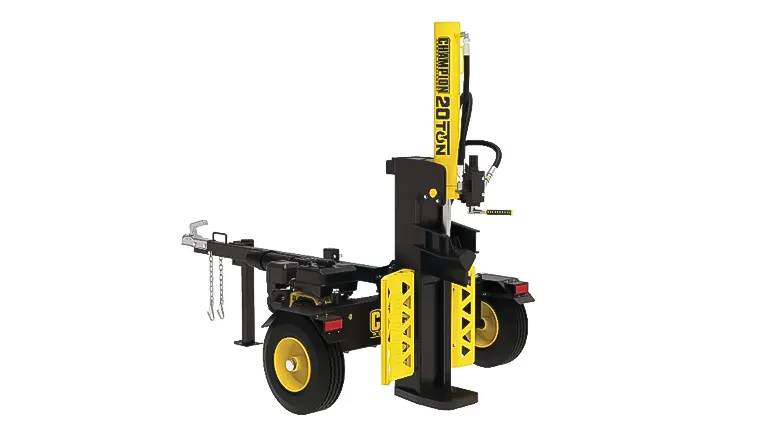


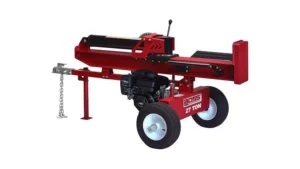
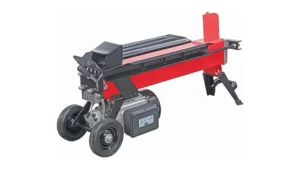
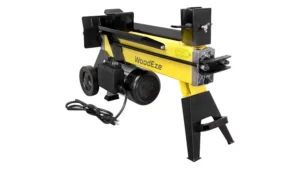
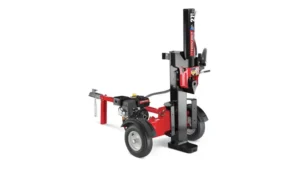
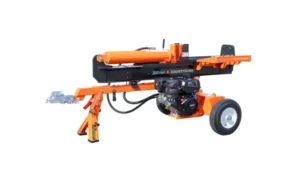





Leave your comment